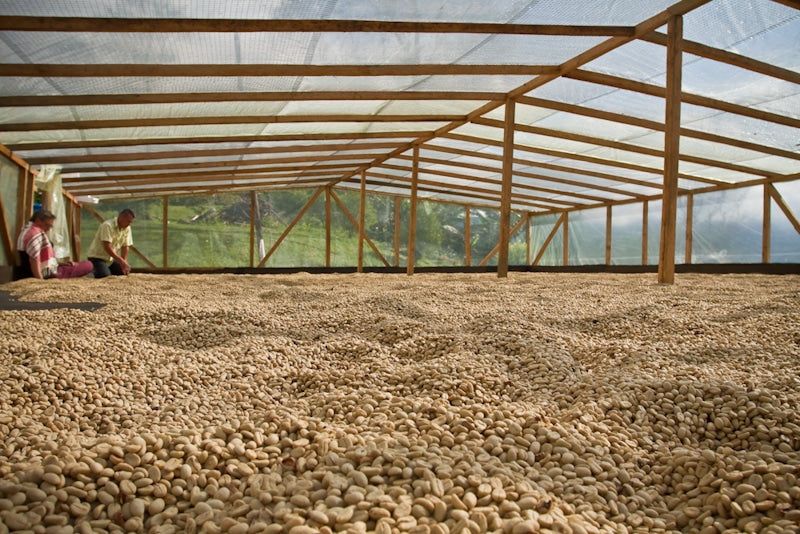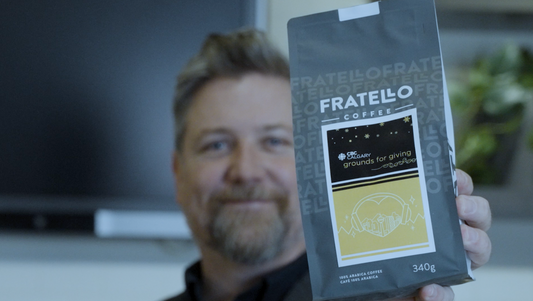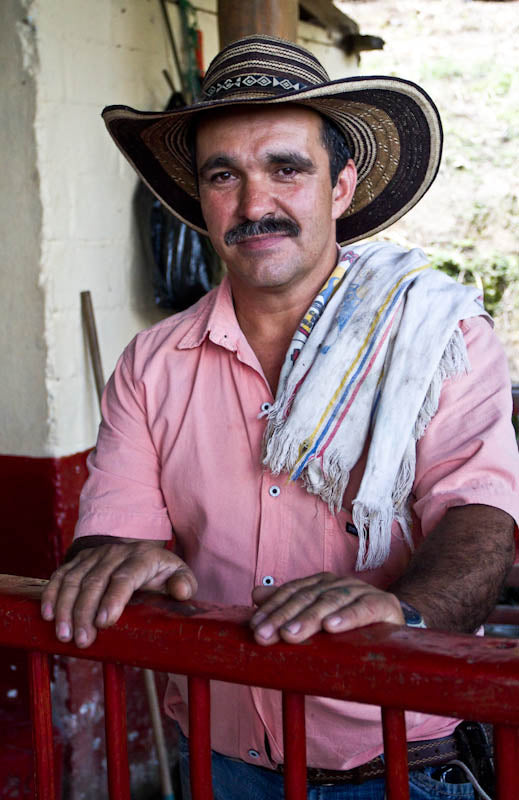The Effects of Drying Speeds for Green Coffee

Nothing is more rewarding then seeing a fresh crop of micro-lots being unloaded off the back of a truck into our roastery. This pleases me so much as I know the amount of work our producers and exporters have put into this coffee to get it this far. I also know how much work we have put into sourcing and choosing these precious beans to offer our clients. What many don’t know, is how the drying speeds at the farm, can drastically effect the quality and shelf life of the green beans roasters receive.
Nothing is more disappointing then when you begin to sample roast and begin profiling these new arrivals and the flavor profiles we tasted at origin are no longer being tasted. “What is going on!?!? How can a coffee taste so different at origin compared to what we are tasting now?” This isn’t unique to Fratello, and is something we have heard many roasters around the world talk/complain about. It has been a topic of many conversations over the past year with the coffee producers we work with and exporters who are working on the ground at origin every day.
My first major experience with this coffee was 2 years ago when we purchased an incredible micro-lot from Acevado Huila, Colombia. This 20 bag lot was scored a 91.00 at origin by myself and the others we were with that day. It was an outrageous coffee, and we paid top dollar for it. By the time we received this coffee 3 months later, it was extremely faded. We were getting cupping notes of wood/twigs and it almost tasted like a past crop coffee. The moisture content was accurate and the processing seemed perfect. We ended up not selling this coffee to anyone. It was a total waste of our time and re-sources. So what went wrong?
6 months later we visited this coffee producer again and began asking questions about how they dried their coffee. In Colombia it is normal for producers to use a Parabolic drying bed (similar to a green house). These are perfect for protecting the green beans from the elements; however, it can also produce high levels of heat when not used properly. Unfortunately, this producer was not, and was drying their coffee in 3-4 days. This is WAY too fast. Typically, a producer would want to slowly dry their coffee over a 12-18 day time frame for an even consistency throughout the bean. What we are learning is when you dry your coffee too quickly; it is hard to read the correct moisture level in your green beans accurately. The extreme heat forces the water content into the beans giving a false reading in your moisture meters. You may show a moisture reading of 11-12% (which is the goal), but as these beans sit, the moisture that was forced into the bean, will migrate back out to the surface over time. The end results are beans being pulled from the drying beds much to early, giving an unstable bean, which has potential fermentation and accelerated fading in flavors.
Another example is in El Salvador we had purchased an award winning Pacamara (large bean). It was extremely sweet, with an orange syrupy body, maple flavors and very clean. On arrival in Calgary, we found some of the same faded, twiggy notes coming through in the cup. Again, a huge disappointment. With research we found that the drying time was 5-7 days, which was much too fast for such a large bean.
In speaking with our producers the biggest challenge they face is the changing environment. It is getting hotter and more intense each year. They never had these issues in the past of drying the coffee this quick and now have to re-think their processing techniques. Creating systems that help them slow the drying times employing shade barriers and different cooling techniques. All of this takes time and often a lot of money to re-create their drying beds. More and more often we see raised African beds with shade cover being installed and used on our top micro-lots.
This then brought my attention to the mechanical drying systems installed at MANY large and micro-mills around the world. They are becoming very common, as coffee must be dried once it is de-pulped after harvesting. If the sun isn’t out due to rain, the coffee will need to go into dryers. These dryers work very fast, and often only take 1 day to finish the drying. This drying technique is not only fast; it consistently dries the bean through out. Is this the best route?
Studies are now showing that the ideal drying conditions for coffee require the slow drying technique. What this allows are some resting periods for coffee. When heat is on the beans, the cellular structure opens, when the temperatures drop, the cells close…. almost like it is breathing. This has shown to create a harder cellular structure on the bean that enhances acidity and gives better conditions when roasting. The fast drying speeds in the mechanical system never allow for resting, giving a softer cellular structure and less acidity in the final cup.
This short blog post barely scratches the surface on drying techniques and does not answer or explain everything processing technique (Naturals, pulped naturals, honey’s, etc…), but has simply been written to bring some awareness to a subject not often discussed. We have some much more to learn, and together with the producers will continue to push the limits of processing, exporting and roasting the best coffee in the world.










